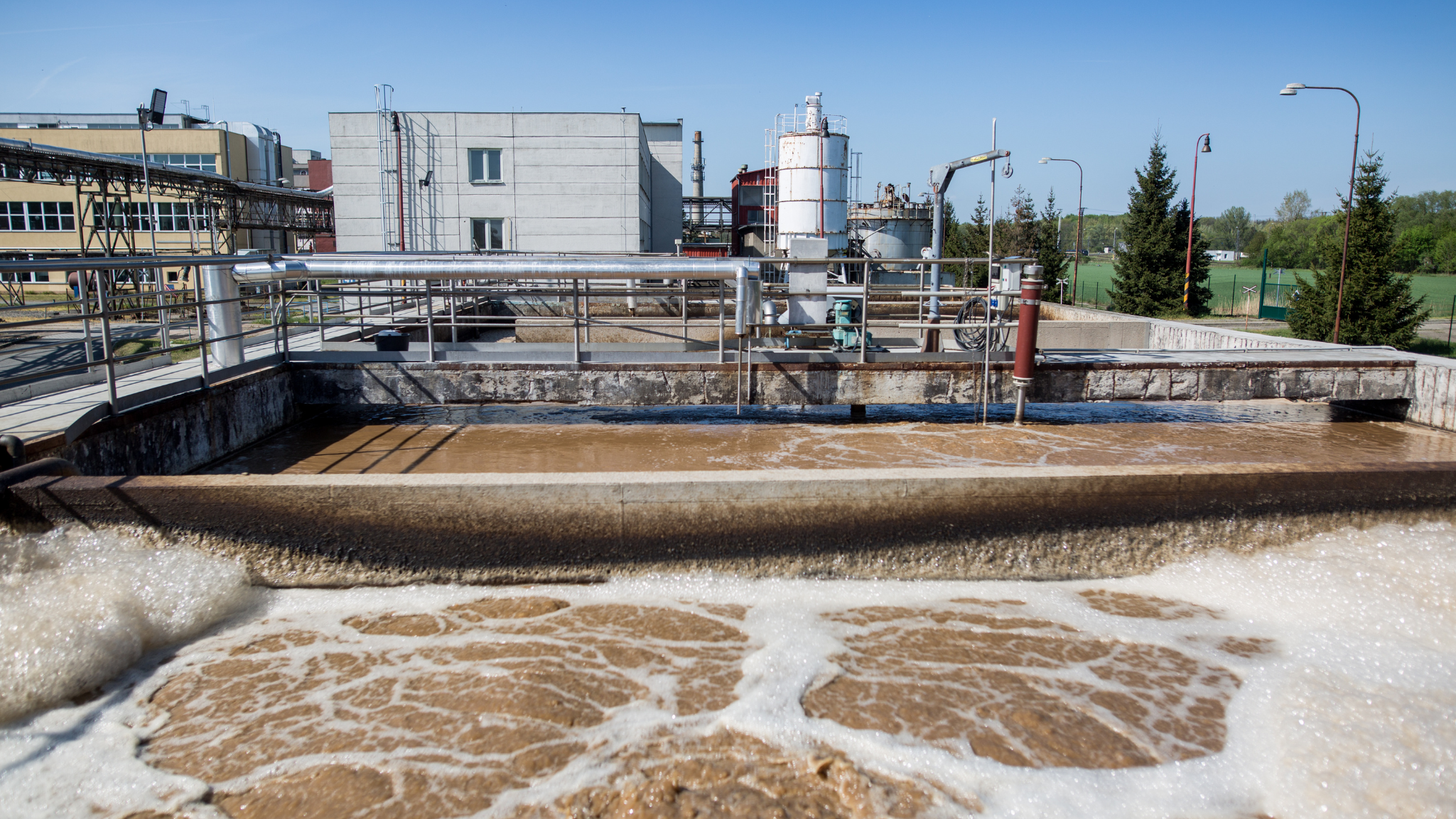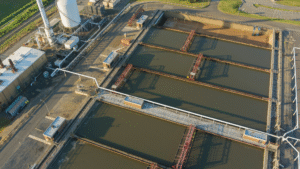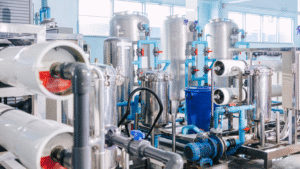Odor control for wastewater is a critical component of modern wastewater management, especially as treatment plants expand to serve growing populations. Unpleasant odors—often described as “rotten eggs,” sulfuric, or chemical-like—can escape from wastewater systems during key stages of the treatment process or in collection systems like lift stations and force mains. These emissions not only trigger complaints but can also jeopardize public health, environmental quality, and the reputation of the treatment facility.
Many of these odors stem from biological activity within wastewater streams, producing volatile compounds such as hydrogen sulfide and ammonia. When these gases are released into the surrounding air, even at low concentrations, they can pose serious issues for workers and nearby communities. Wastewater treatment plants must therefore implement comprehensive odor control strategies to minimize nuisance odors, protect public health, and maintain good standing with regulatory agencies.
Fortunately, recent advancements in odor management—especially through targeted chemical treatment—are helping facilities tackle these challenges more effectively. This article explores the science behind wastewater odors, common control strategies, and the role of innovative chemical solutions in mitigating emissions at the source.
The Chemistry Behind Wastewater Odor
Wastewater odor is primarily the result of biological decomposition. As organic matter breaks down within wastewater systems, microorganisms such as anaerobic bacteria produce a range of odorous gases. Among the most common are hydrogen sulfide, ammonia, and other reduced sulfur compounds—all of which contribute to the offensive smells that concern both facility operators and nearby communities.
Hydrogen sulfide gas is especially notorious. Produced when sulfate-reducing bacteria metabolize organic material in low-oxygen environments, it emits a characteristic “rotten egg” odor that is detectable at extremely low concentrations. Even levels below 1 part per million (ppm) can trigger odor complaints. Ammonia, another common byproduct, adds a sharp, irritating smell that intensifies the sensory impact when combined with sulfur-based gases.
Other reduced sulfur compounds, including mercaptans and organic sulfides, further complicate odor profiles. These compounds are often found in higher concentrations in industrial wastewater but can also be present in domestic flows.
Several factors influence the formation and release of odors in wastewater systems:
- Dissolved oxygen levels: Low oxygen conditions promote anaerobic activity, increasing odor potential.
- Bacterial activity: Microbial processes generate most odorous gases.
- Flow stagnation: In areas where wastewater becomes static, gases accumulate and eventually escape to the atmosphere.
Understanding these chemical and biological dynamics is the first step toward selecting the right odor control solution.
See: How Industrial Wastewater Odor Control Systems Work
Key Odor Control Strategies in Wastewater Treatment
A. Liquid Phase Odor Control
In most wastewater treatment systems, odor generation begins in the liquid phase—that is, within the water itself. The wastewater collection system, including lift stations, force mains, and gravity sewers, often lacks sufficient oxygen to suppress anaerobic microbial activity. These low-oxygen conditions allow bacteria to produce hydrogen sulfide and other volatile sulfur compounds directly within the flowing wastewater.
Liquid phase treatment targets these odorous compounds before they transition into gas. Common chemical approaches include:
- Hydrogen peroxide: A powerful oxidant that reacts with sulfides and neutralizes them in solution.
- Nitrate-based formulations: These promote aerobic bacterial metabolism, reducing the production of sulfur-based gases.
- Essential oils and plant-based additives: Natural options that can bind with or suppress odorous molecules without harsh chemical impact.
These chemical methods work by increasing dissolved oxygen or directly oxidizing precursors before they volatilize. In some cases, biological systems are added to promote beneficial bacteria that outcompete odor-causing organisms, further suppressing gas production.
Because liquid phase odor control addresses the problem at its source, it often leads to longer-lasting odor suppression compared to treating air emissions alone.
B. Vapor Phase Odor Control
When odorous gases escape from the liquid and enter the vapor phase, they must be captured or neutralized before being released into the environment. This phase of odor control is critical near exposed infrastructure such as clarifier headspaces, sludge tanks, or odor scrubber stacks.
Common vapor phase treatment techniques include:
- Activated carbon filtration: Removes odorous air compounds through adsorption.
- Ozone injection: A strong oxidizer used to destroy higher concentrations of sulfur compounds in the air.
- Chemical misting systems: These spray neutralizing agents into confined air spaces or vented streams.
Vapor phase systems are typically installed at critical emission points and are selected based on odor loading, available space, and regulatory requirements. They are most effective when used in conjunction with upstream liquid phase odor control efforts.
Innovations in Chemical Odor Control
ETI’s Role in Wastewater Odor Control Solutions
Bioaugmentation for Liquid Phase Odor Control
ETI’s bioaugmentation solutions are especially effective in the liquid phase, where odor compounds begin forming within the wastewater itself. By introducing specialized microbial strains into collection systems, ETI helps suppress the anaerobic bacteria responsible for producing hydrogen sulfide and other reduced sulfur compounds.
These microbes are carefully selected to break down organic matter more efficiently, reduce sludge accumulation, and maintain healthy levels of dissolved oxygen. This biological approach not only improves treatment outcomes, but also limits the conditions that allow odor-causing organisms to thrive.
Grease Trap Products for FOG-Driven Odor Reduction
For food service, hospitality, and industrial facilities that struggle with fats, oils, and grease (FOG), ETI offers a full line of grease trap maintenance products. These treatments reduce grease buildup, break down rancid organic waste, and neutralize odors directly within grease traps, drain lines, and lift stations.
By minimizing FOG-related gas emissions and preventing clogs, these products support both operational efficiency and odor control. This is particularly important in high-volume kitchens, food processors, and institutional wastewater systems.
Targeted, Cost-Effective Solutions for Odor Control
ETI’s combined chemical and biological programs deliver cost effective solutions tailored to the conditions of each site. Whether mitigating wastewater odor at the source or treating residual gases, ETI provides treatment options that help facilities stay compliant, reduce community complaints, and protect critical equipment from odor-related damage.
Explore ETI’s Bioaugmentation Solutions and Grease Trap Products.
Why Odor Control Matters
Effective odor control for wastewater is not just about eliminating unpleasant smells. It plays a direct role in safeguarding public health, protecting the environment, and maintaining trust within the surrounding community. As urban development continues to bring residential areas closer to treatment infrastructure, the pressure to manage odors responsibly will only increase.
Advanced chemical and biological odor control strategies give wastewater operators the tools to address both the liquid phase and vapor phase sources of nuisance odors. Whether the issue is hydrogen sulfide, ammonia, or complex odorous compounds, today’s solutions offer better performance, system protection, and long-term operational savings.
For wastewater facilities that want to stay ahead of complaints, regulatory penalties, and rising treatment costs, contact ETI today for proactive and sustainable strategy.
Frequently Asked Questions (FAQ)
What are biological odor control systems, and how do they work in wastewater treatment?
Biological odor control systems use living microorganisms to break down odorous compounds like hydrogen sulfide within biofilters or treatment beds. These systems rely on naturally occurring or introduced bacteria to convert volatile gases into non-odorous byproducts. They are commonly used at the vapor phase stage, especially in areas where long-term odor control with minimal chemical input is preferred.
How does liquid phase odor differ from vapor phase odor in wastewater systems?
Liquid phase odor originates within the water itself, typically in collection systems, pump stations, or anaerobic basins. It includes precursors like sulfides and organic acids. In contrast, vapor phase odors are emitted into the air after gases volatilize from the wastewater stream. Managing both types requires a coordinated phase odor control strategy.
Why is hydrogen sulfide gas considered a serious concern in wastewater treatment?
Hydrogen sulfide gas is hazardous even at low concentrations and gives off a strong rotten eggs odor. It poses safety risks to workers, causes corrosion to treatment equipment, and triggers community complaints. Effective treatment of hydrogen sulfide in both phases is critical to avoid health and infrastructure problems.
Do other reduced sulfur compounds contribute to wastewater odor problems?
Yes. In addition to hydrogen sulfide, other reduced sulfur compounds like mercaptans and organic sulfides contribute to foul odors. These compounds can be especially persistent in industrial wastewater and often require targeted chemical or biological process interventions.
What is the best way to manage odor in large municipal collection systems?
Large-scale collection systems benefit from a combined approach: liquid-phase treatment using oxidizing chemicals or bioaugmentation, and vapor-phase treatment with carbon filters or biological scrubbers. Choosing the right method depends on system layout, odor source, and community proximity.





